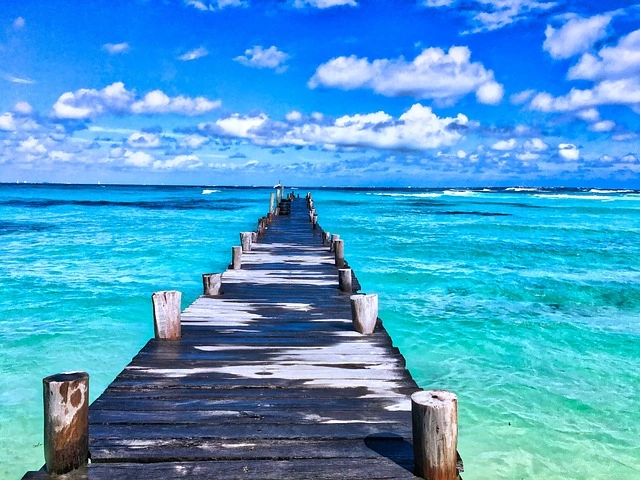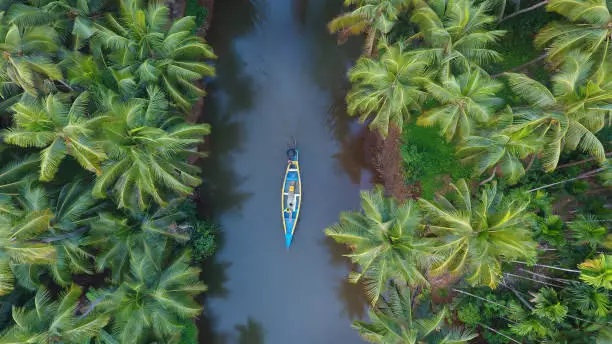
Discovering Mexico Tourism: An Unforgettable Journey Through Culture, Nature, and Adventure
Mexico is a land that captivates the imagination with its vibrant culture, rich history, and stunning natural beauty. As one of the world’s most popular travel destinations, Mexico tourism continues to thrive, drawing millions each year who are eager to experience its bustling cities, white-sand beaches, ancient ruins, and world-famous cuisine.
This guide explores the multifaceted allure of Mexico, from its historic cities and coastal paradises to its cultural festivals and natural wonders, offering an all-encompassing overview for anyone planning a journey to this remarkable country.
Why Mexico Tourism Is on the Rise
Mexico has long been a top choice for travelers around the world. The reasons for its rising popularity are many, including the country’s affordable travel options, welcoming atmosphere, and diverse attractions that appeal to tourists of all interests. From Mayan ruins to modern art museums, Mexico’s tourism industry offers a blend of old and new, providing a unique travel experience that is both affordable and accessible.
1. Exploring Mexico’s Cultural Heritage
Mexico is home to 35 UNESCO World Heritage Sites, a testament to its rich cultural and historical significance. The cities, ancient ruins, and monuments that dot the country offer glimpses into Mexico’s storied past, blending indigenous and Spanish influences that have shaped its identity over centuries.
- Historic Cities: Cities like Mexico City, Puebla, and Guanajuato boast architecture dating back to the colonial era, where visitors can stroll through vibrant streets lined with Baroque and neoclassical buildings. Mexico City’s Zócalo, one of the largest city squares in the world, is flanked by the Metropolitan Cathedral and the National Palace, each a symbol of Mexico’s enduring heritage.
- Ancient Sites: Mayan and Aztec ruins are scattered across the country, with some of the most famous including Chichen Itza, Palenque, and Teotihuacan. These sites offer travelers a chance to marvel at ancient pyramids, temples, and observatories, each bearing intricate carvings and inscriptions that tell the story of a bygone era.
2. Natural Wonders and Scenic Landscapes
The landscapes of Mexico are as diverse as its culture. From arid deserts to lush jungles and mountain ranges, the country offers a spectrum of natural attractions perfect for nature enthusiasts and adventurers alike.
- Beaches and Coastlines: Cancun, Tulum, Playa del Carmen, and Los Cabos are renowned for their pristine beaches, clear turquoise waters, and luxurious resorts. These coastal paradises are ideal for snorkeling, scuba diving, and water sports, while Tulum’s beachside ruins provide an unforgettable view.
- Copper Canyon: Located in the northern state of Chihuahua, Copper Canyon is a series of six interconnected canyons larger and deeper than the Grand Canyon. Visitors can explore the area by train on the famous El Chepe Railway, hike scenic trails, or visit indigenous Tarahumara villages.
- Diverse Ecosystems: Mexico’s biodiversity is another reason the country attracts millions of tourists each year. Monarch butterfly reserves, whale-watching in Baja California, and cenotes in the Yucatan Peninsula are all part of Mexico’s natural offerings, creating an outdoor paradise for eco-tourism enthusiasts.
3. The Allure of Mexican Cuisine
Mexican cuisine is a significant draw for travelers, with flavors that span centuries and regions. Declared an Intangible Cultural Heritage by UNESCO, Mexico’s cuisine is a rich fusion of indigenous and European influences that has gained international acclaim.
- Street Food: For an authentic taste of Mexico, sampling street food is essential. From tacos al pastor and tamales to elote (grilled corn) and churros, street food in Mexico is as varied as it is flavorful. Mexico City is known as a street food capital, where visitors can find some of the country’s best.
- Regional Specialties: Each region has its specialties, such as mole from Oaxaca, pibil dishes in Yucatan, and fresh seafood in Baja California. Food tours and cooking classes have become popular ways for tourists to experience the depth of Mexican cuisine and learn traditional cooking techniques.
- Tequila and Mezcal: No trip to Mexico is complete without tasting tequila and mezcal, two traditional spirits with deep cultural significance. The state of Jalisco, particularly the town of Tequila, is home to countless distilleries where visitors can learn about the production process and enjoy tastings of these iconic drinks.
4. Vibrant Festivals and Traditions
The warmth and hospitality of Mexican culture are showcased in its festivals, many of which are celebrated with a vibrancy and joy that captivate tourists. Each festival provides a unique insight into Mexican traditions and offers an immersive experience for travelers.
- Dia de los Muertos: The Day of the Dead is one of Mexico’s most famous festivals, celebrated annually on November 1st and 2nd. Known for its colorful altars, sugar skulls, and traditional marigold decorations, this holiday honors loved ones who have passed away, blending indigenous beliefs with Catholic traditions.
- Carnaval: This pre-Lenten festival is celebrated in cities like Veracruz and Mazatlan with parades, music, and dancing. It is a festive event that attracts both locals and tourists who enjoy the energy and liveliness of this coastal celebration.
- Guelaguetza Festival: Held in Oaxaca, the Guelaguetza is a celebration of the state’s indigenous cultures and traditions. Dancers in colorful traditional clothing perform in this two-week festival, accompanied by music and markets where visitors can purchase local crafts.
5. Adventure Activities in Mexico
For thrill-seekers, Mexico offers numerous adventure activities that take advantage of its diverse landscapes. From underwater adventures in the Caribbean to mountain hikes and desert expeditions, there is something for every adventurous traveler.
- Scuba Diving and Snorkeling: The Caribbean coast is renowned for its diving sites, particularly the Mesoamerican Barrier Reef near Cozumel and Cancun, which is the second-largest coral reef system in the world. With crystal-clear waters and abundant marine life, these sites are perfect for both beginners and experienced divers.
- Hiking and Climbing: The mountainous regions of Mexico provide excellent hiking opportunities, such as Iztaccihuatl and Popocatepetl, two volcanic peaks near Mexico City. Further south, the Sierra Norte mountains in Oaxaca offer eco-friendly tourism with hiking and zip-lining options.
- Cenote Swimming: In the Yucatan Peninsula, natural sinkholes known as cenotes are a popular attraction for swimming, snorkeling, and diving. These natural formations are unique to the region and offer a refreshing way to enjoy Mexico’s warm climate.
6. Practical Tips for Traveling to Mexico
A visit to Mexico requires some planning, especially when it comes to safety, currency, and transportation. These practical tips will help travelers make the most of their experience in Mexico.
- Safety Considerations: While Mexico is generally safe for tourists, it’s wise to exercise caution, particularly in urban areas. Stay informed about your destination and follow travel advisories when exploring certain regions.
- Currency and Payment: The official currency is the Mexican Peso (MXN), and cash is widely used, especially in rural areas. Credit cards are commonly accepted in urban centers and tourist destinations, but it’s advisable to carry cash for smaller purchases.
- Transportation: Mexico has a robust transportation network, with options ranging from affordable long-distance buses to domestic flights that connect major cities. For getting around locally, rideshare services like Uber are available in cities, while taxis and colectivos (shared minibuses) are popular in smaller towns.
7. Mexico Tourism: A Sustainable Future
As Mexico’s tourism industry grows, there is a growing emphasis on sustainable travel practices to preserve its natural and cultural heritage. Many eco-tourism initiatives have been launched to promote responsible tourism, including conservation programs and community-based projects that benefit local communities.
- Eco-Friendly Resorts: Many resorts in popular areas like Tulum and the Riviera Maya have adopted eco-friendly practices, such as solar energy and waste reduction programs. These accommodations allow travelers to enjoy their stay while minimizing their environmental footprint.
- Community Tourism: In Oaxaca, Chiapas, and other rural regions, community tourism initiatives provide visitors with an authentic experience of indigenous culture, often involving homestays, craft workshops, and guided tours led by locals.
- Marine Conservation: Efforts to protect Mexico’s marine ecosystems are gaining momentum, particularly in places like the Sea of Cortez and the Caribbean coast. Visitors can participate in conservation programs or support marine-friendly tours that prioritize reef preservation.
Experience Mexico Tourism at Its Finest
Mexico offers a travel experience like no other, blending historic grandeur with natural beauty, modern luxury with ancient traditions, and thrilling adventure with serene landscapes. Whether visiting for its beaches, cuisine, cultural events, or natural wonders, Mexico promises unforgettable experiences for every traveler. As you plan your next adventure, embrace the spirit of Mexico tourism and prepare for a journey that will leave a lasting impression on your heart and soul.










